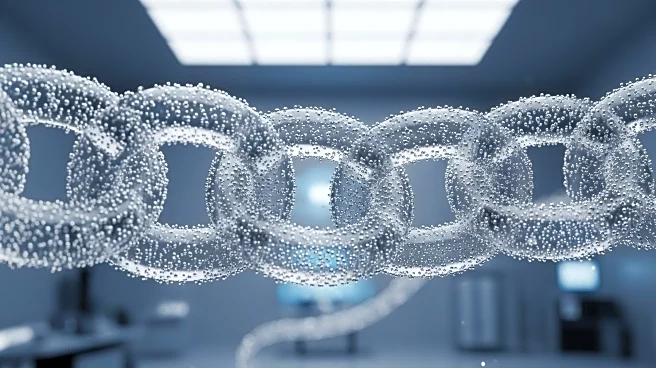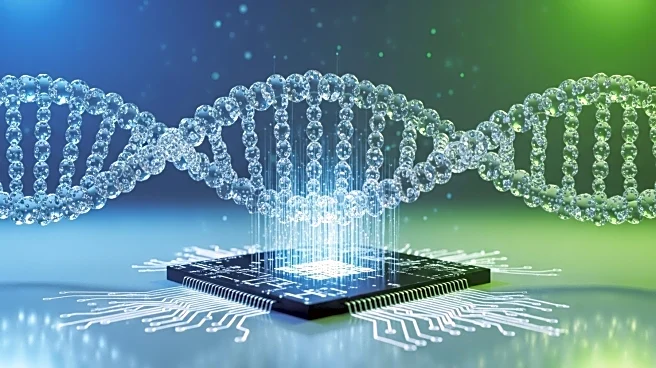What's Happening?
Researchers at Jilin University in China have developed a method to enhance the properties of common plastics by incorporating nanoparticles. This approach addresses the 'plastics trilemma,' which involves balancing strength, toughness, and ease of processing. By mixing polystyrene nanoparticles with polymers such as PEMA, acrylic glass, and PVC, the team achieved significant improvements in material performance. For instance, PEMA showed a 50% increase in strength when fortified with nanoparticles. The study involved computer simulations to understand how nanoparticles redistribute within the material under stress, allowing for smoother deformation and easier processing when melted. This innovation could lead to the development of next-generation polymers with enhanced properties.
Why It's Important?
The integration of nanoparticles into plastics has the potential to revolutionize various industries by providing materials that are lightweight, strong, tough, and easily processable. This advancement could benefit sectors such as automotive, aerospace, sustainable packaging, and biomedical devices. The ability to produce durable and recyclable plastics aligns with global efforts to reduce environmental impact and improve sustainability. By enhancing the performance of plastics, manufacturers can create products that are more efficient and environmentally friendly, potentially reducing waste and resource consumption.
What's Next?
The research team suggests that their nanoparticle-enhanced plastics can be scaled up using existing industrial processes, paving the way for widespread adoption. This strategy could lead to the development of new applications in various fields, including advanced composites and recyclable materials. As industries seek sustainable solutions, the adoption of these improved plastics could drive innovation and change in manufacturing practices. Stakeholders in the automotive, aerospace, and packaging industries may explore partnerships or investments to leverage this technology for competitive advantage.
Beyond the Headlines
The use of nanoparticles in plastics raises questions about the long-term environmental and health impacts. While the technology promises improved material properties, it is essential to consider the lifecycle of these materials and their potential effects on ecosystems. Further research may be needed to assess the safety and environmental implications of widespread nanoparticle use in consumer products. Additionally, this development highlights the growing importance of nanotechnology in addressing complex material challenges and its role in advancing sustainable practices.










